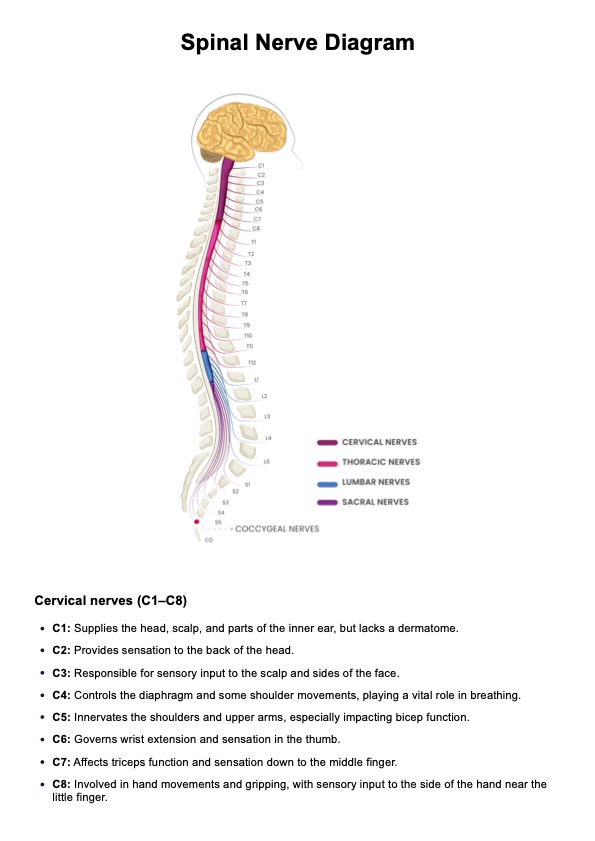Each spinal nerve corresponds to a specific region of the body. Cervical spinal nerves (C1-C8) control the neck, shoulders, arms, and hands. Thoracic nerves (T1-T12) affect the chest and upper abdominal muscles. Lumbar nerves (L1-L5) influence the lower back, hips, and legs, while sacral nerves (S1-S5) impact the pelvic region, thighs, and feet. The coccygeal nerve primarily affects the area around the tailbone.












